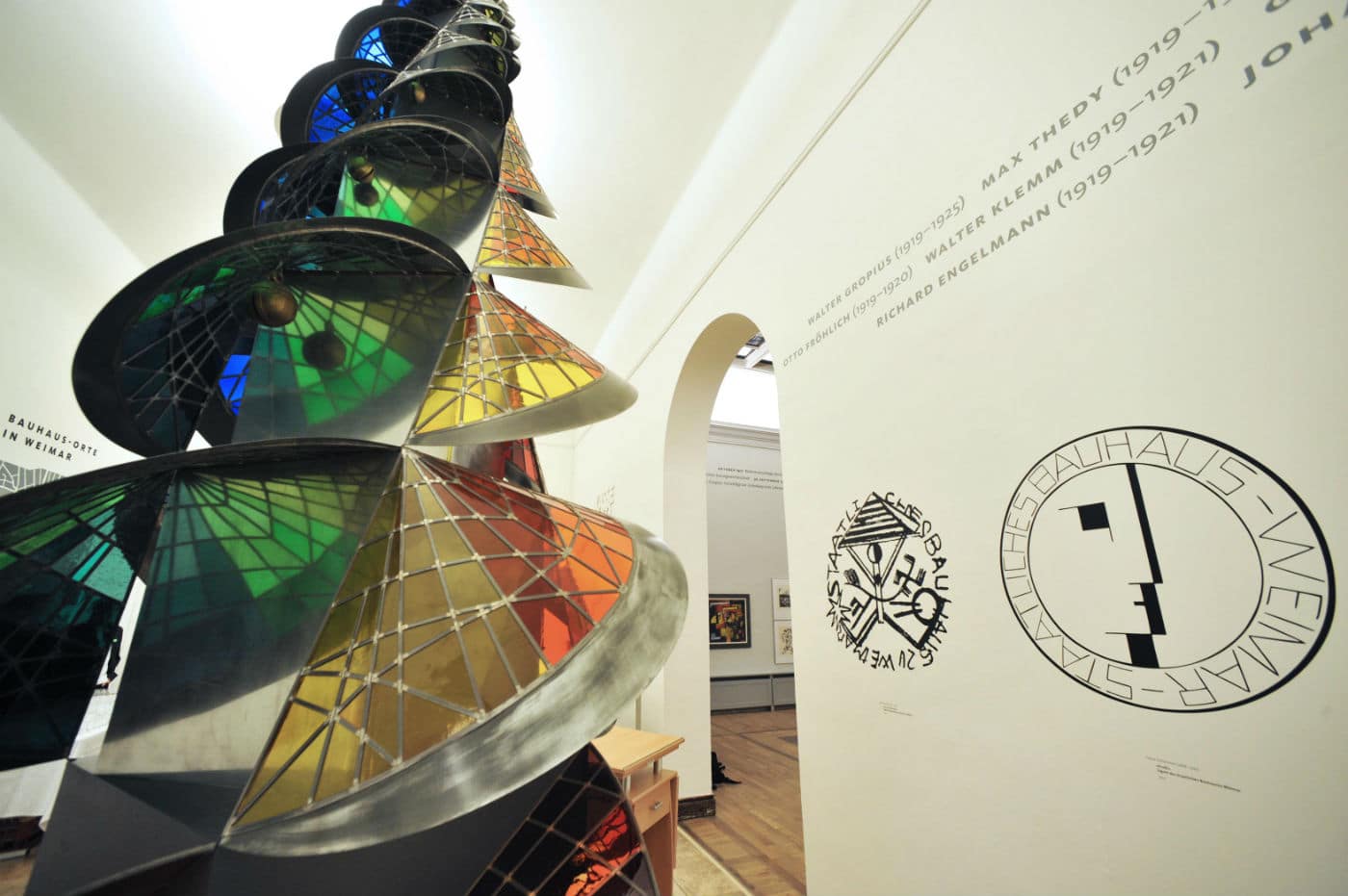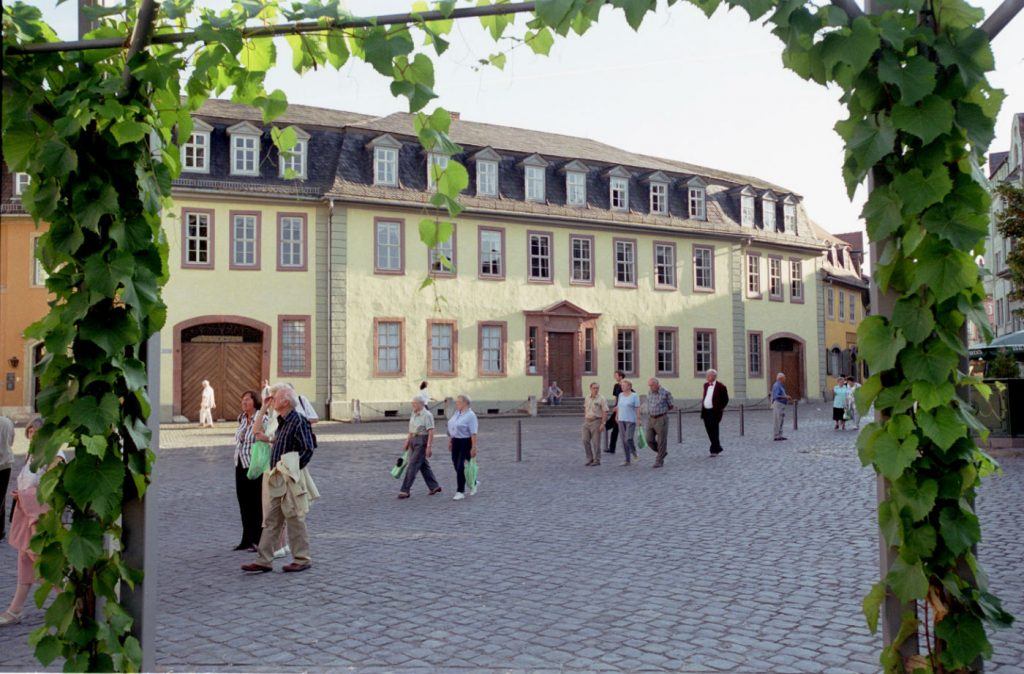
Weimar is a city made for walking and, if you take an impromptu stroll, at almost every turn you’ll encounter statues, museums and famous buildings linked to the Age of Enlightenment. Located centrally in the German federal state of Thuringia, this UNESCO World Heritage destination was the focal point of Weimar Classicism – a literary movement from the 19th century that included writers like Goethe, Friedrich Schiller, and Nietzsche, and later, cultural icons in music like Franz Liszt and designers and architects like Henry Van de Velde and Walter Gropius. With an astounding sixteen UNESCO designations, many within walking distance of each other, it’s practically a goldmine for anyone with artistic inclinations.
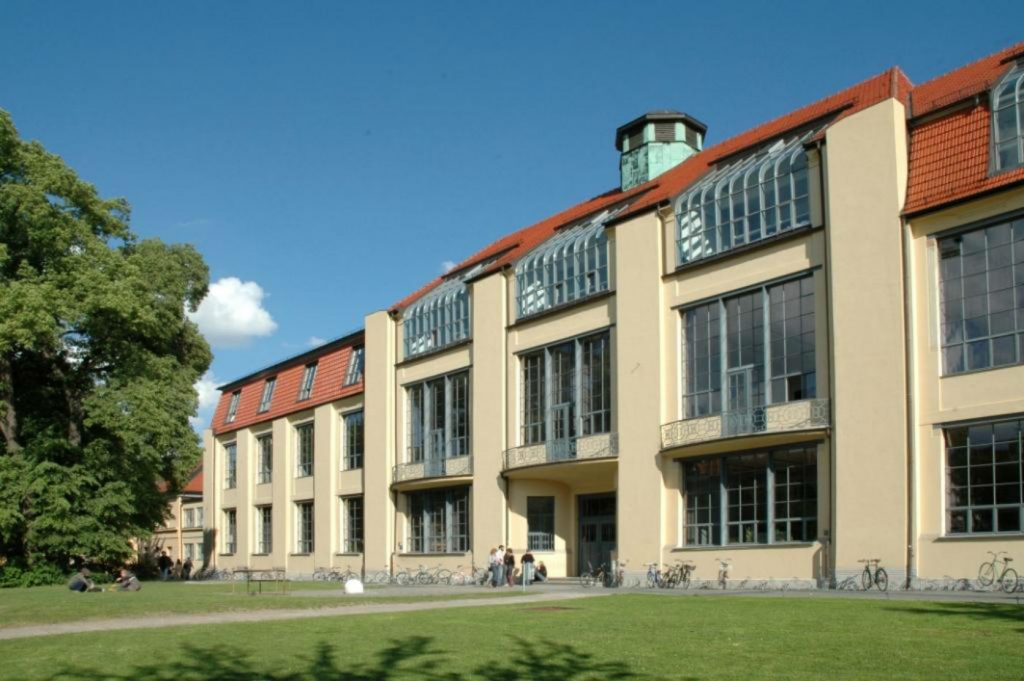
A City of Architectural Masters
Gropius, chief among the elite group of Weimar heavyweights, founded the Bauhaus school here in 1919 with the singular purpose of bringing all arts, including architecture, together. He believed that all artists should be craftsmen; they should touch and feel materials. After studying architecture, he became a director of craft workshops and art studios.
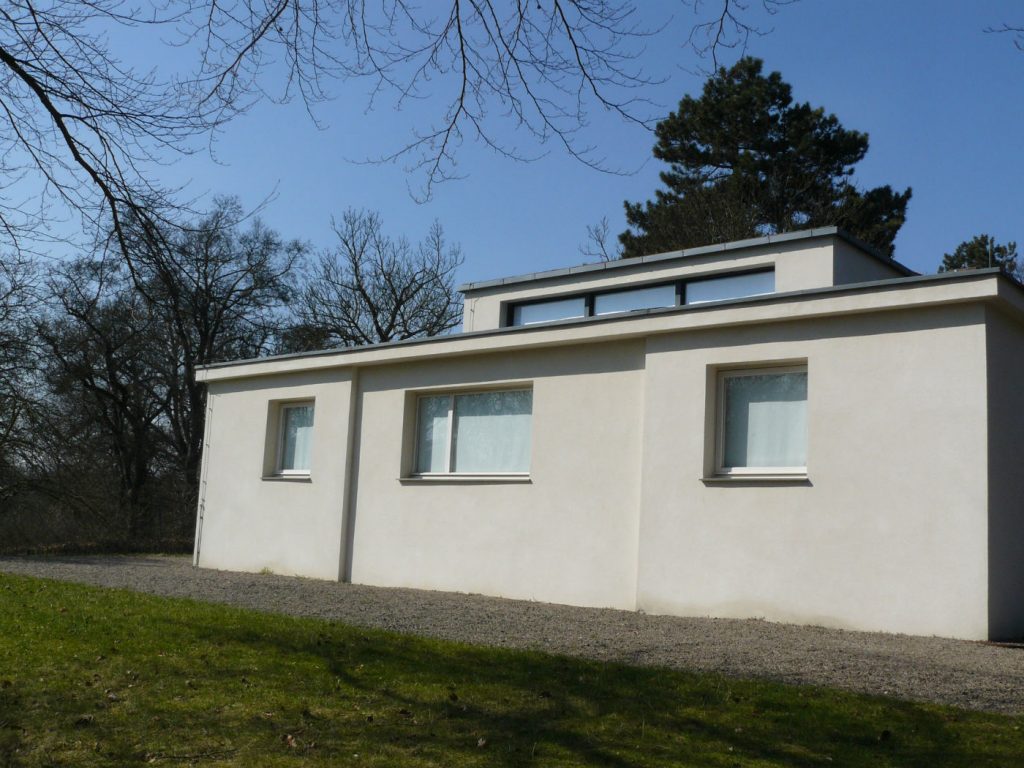
The first of the Bauhaus buildings, the Haus am Horn, was constructed in 1923 utilizing a daring functional style. It was a test house built for Weimar’s Bauhaus exhibition with all original furnishings designed and created in Bauhaus workshops. Designed by Georg Muche, a Bauhaus painter and teacher, it is the jewel of the school. With simple rooms void of fancy ornamentation, the Haus am Horn’s 20-foot square living room is lit by a clerestory window. It was revolutionary for its day as it featured ultramodern conveniences like built-ins and central heating. Even today it seems new. Located in an affluent neighborhood, the “shoebox” with its plain cube structure was understandably unpopular in the surrounding neighborhood of stately mansions.
But never mind the period unpopularity – Bauhaus went on to become one of the most influential currents in modern architecture and design. “Everyone sitting on a steel chair with a tubular frame, using an adjustable reading lamp or living in a house partly or entirely constructed from prefabricated materials is benefiting from a revolution … largely brought on by the Bauhaus,” writes Frank Whitford in “Bauhaus: World of Art.” Today Bauhaus- designed buildings constructed almost 100 years ago blend perfectly with modern structures and demand hefty sums. Considered today to be the cradle of modern architecture, Bauhaus is already gearing up for celebrations in honor of its centenary in 2019.
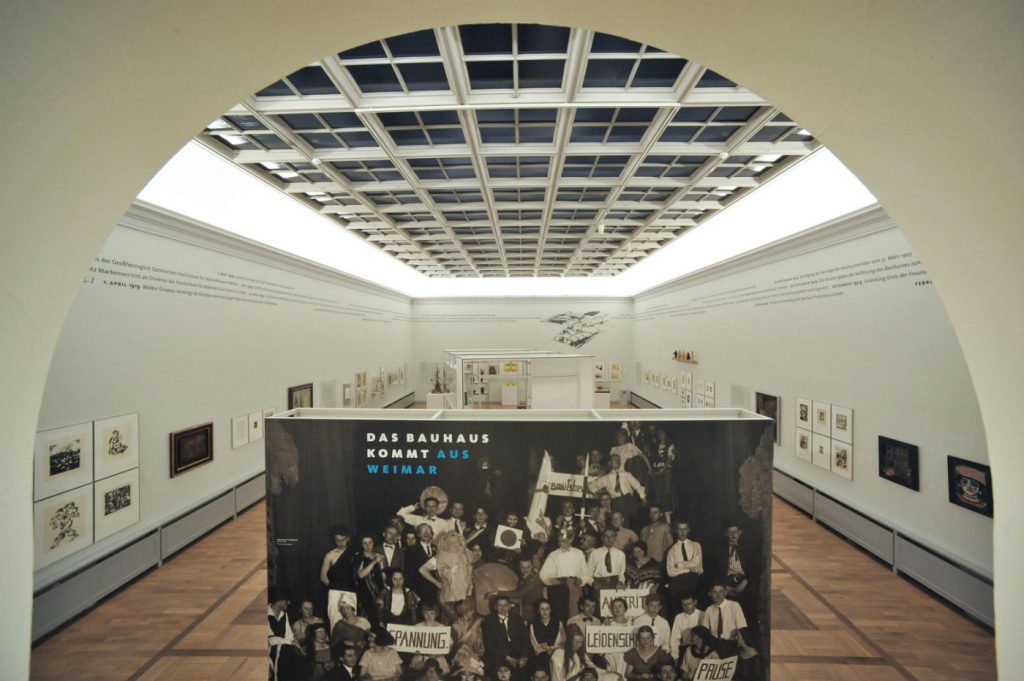
The Haus am Horn can still be visited today but alas, it is no longer furnished. However, many of the furnishings and crafts created by Gropius and his masters from the school can be viewed at the Bauhaus Museum located in an 18th century pink stucco building. The objects illustrate the multifarious nature of the school’s work in Weimar.
A precursor to Gropius who also left his mark in Weimar is Henry van de Velde, a Belgian architect and designer considered a pioneer of modernity. It was his arts and crafts seminar in Weimar in 1902 that Gropius later developed into Bauhaus. House Hohe Pappeln, a country house for his family, is reminiscent of a ship on its side. The garden and the family’s everyday living area with furniture designed by Van de Velde are well worth a visit.
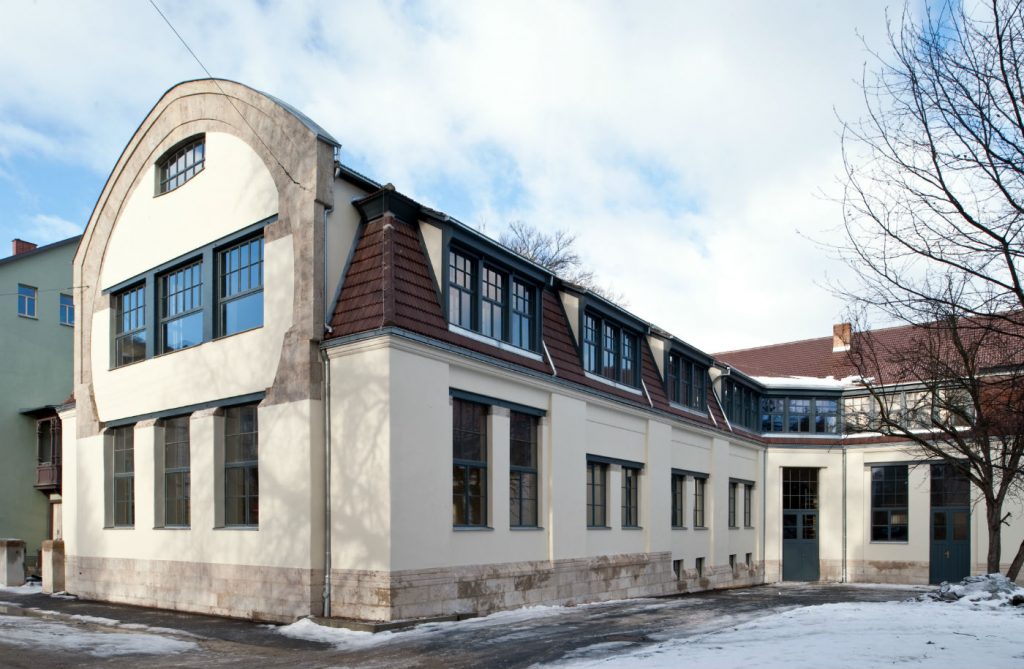
Among Van de Velde’s most successful creations are the interior design and furnishings of Weimar’s Nietzsche Archive. The philosopher Friedrich Nietzsche spent the last years of his life in Weimar and many rooms of the building have been completely preserved as an artistic masterpiece.
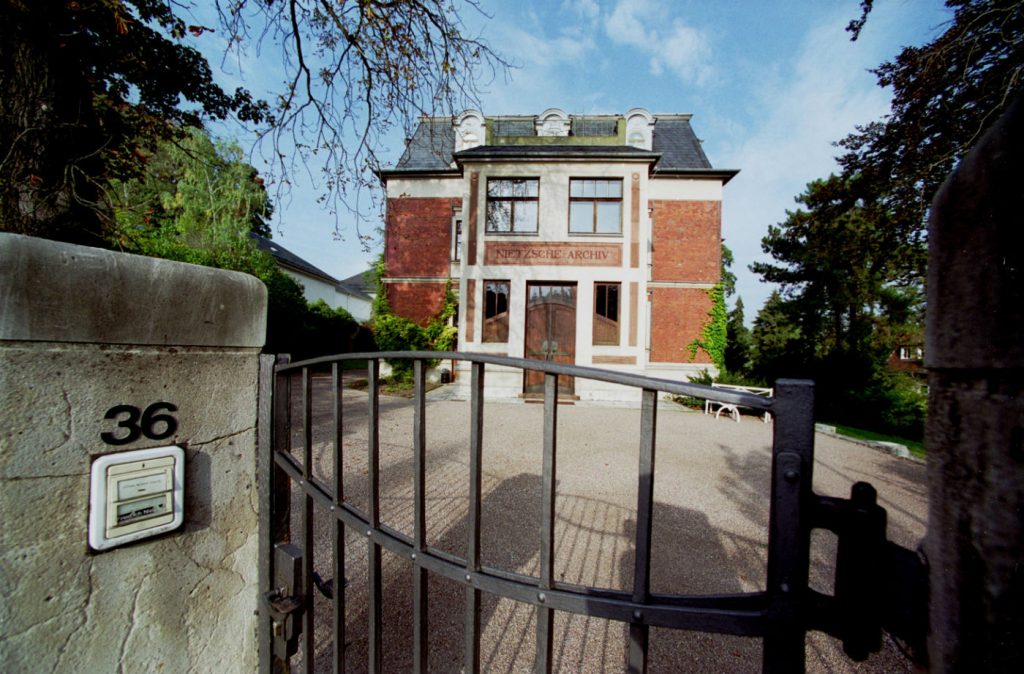
A City of Renowned Composers
The composer Franz Liszt also lived for a time in Weimar. The home where he resided and gave piano lessons is now a museum with both a Bechstein grand piano and an Ibach piano. A special exhibit allows visitors to experience Liszt’s works both visually and acoustically.
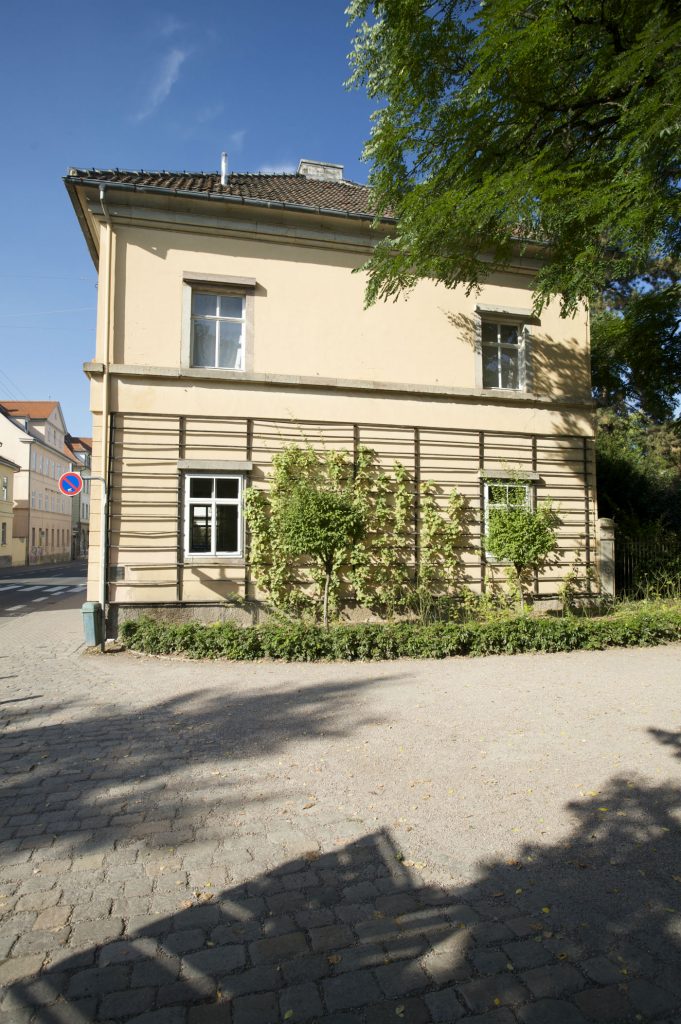
Another famous composer you may recognize, Johann Sebastian Bach, lived in Weimar from 1708 until 1717. He was the court’s organist and later concert master. Two of his sons were born in the city. Bach is commemorated with a statue on the Platz der Demokratie.
A City of Literary Masters
Literary masterpieces and those who created them draw many visitors to Weimar. What Stratford-on-Avon is to Shakespeare, Weimar is to Goethe and Schiller, Germany’s two most famous poets and writers.

Johann Wolfgang von Goethe lived in Weimar and the Goethe Haus, where he resided for 42 years, is open to visitors. Goethe studied the effects of color on human beings and published a 1,400 page book on the topic. The furnishings and colors of the rooms (light green, vivid red, turquoise) are original and reveal surprising facts about the literary genius. He was also a collector of minerals. His collection included some 1,800 stones – only a fraction of which are on display in the house. The study where he penned Faust and other immortal works, and the bedroom where he died, are preserved in their original state.
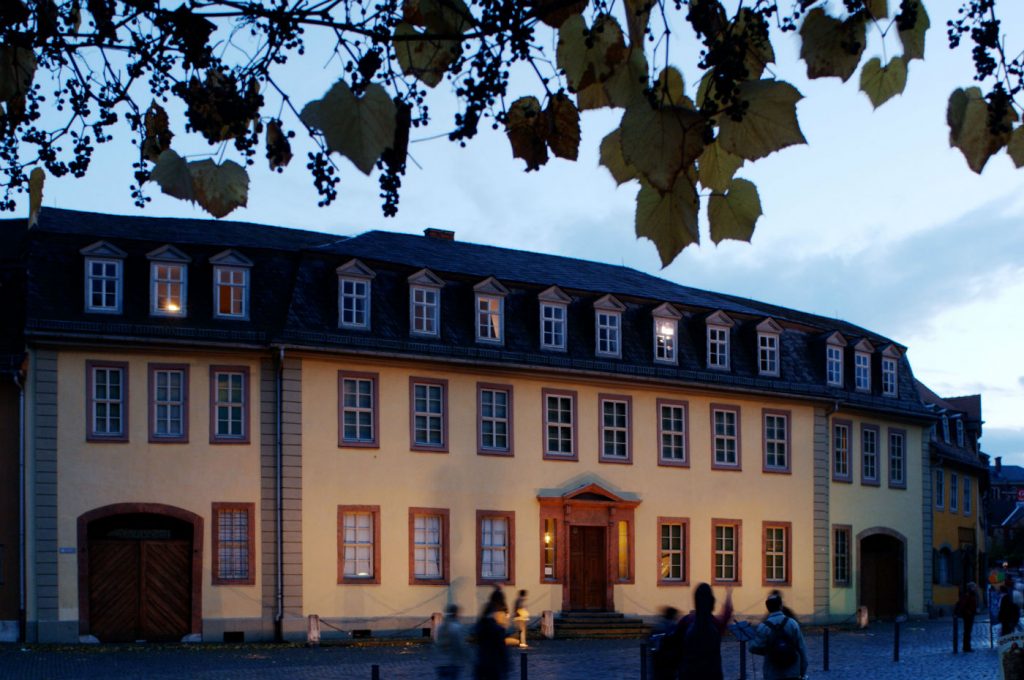
Goethe was also intrigued by landscape and in 1778 helped lay out the city’s beautiful Park on the Ilm, 150 acres in classic English style. It is a delight of thickets, meadows, and winding brooks spanned by wooden bridges. The Garden House where Goethe spent his summers, and enjoyed many an intimate rendezvous, is open to visit. Goethe’s passions were legendary. He wrote 1,700 love letters to his favorite female companion, Charlotte von Stein. His works, and those of his friend, Friedrich Schiller, fostered the theatrical style known as Weimar Classicism.
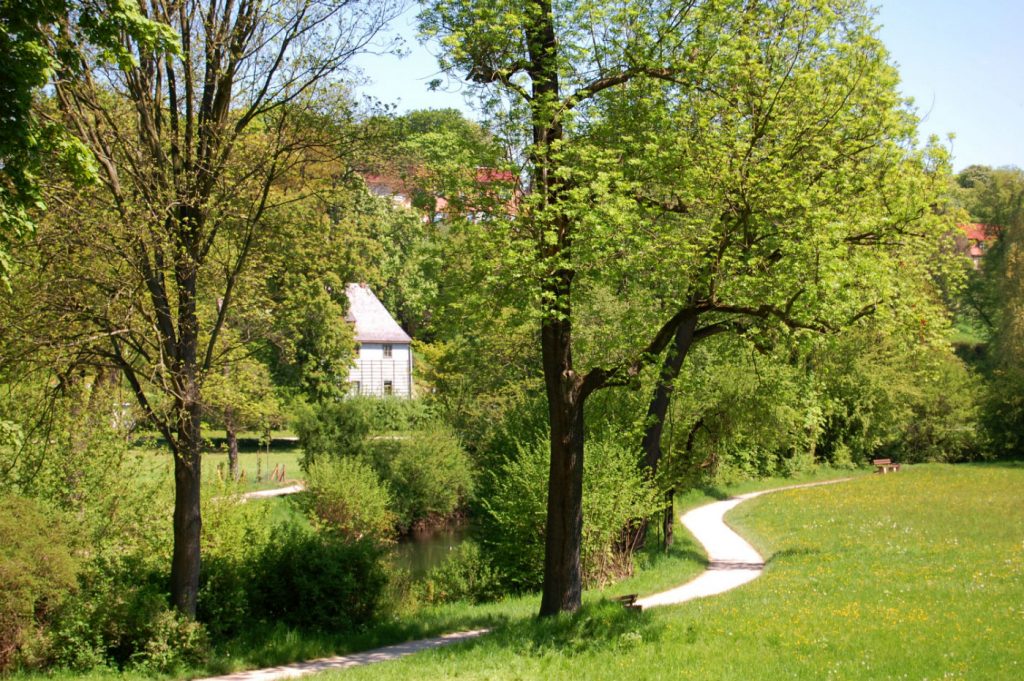
Schiller’s house in Weimar is another site to visit. The dramatist bought the house in 1802 for “all the money I had and could somehow scratch together.” It is in the late Baroque style with a bright yellow façade. Schiller spent only eight years in Weimar, and died in his study in the house which includes his deathbed and the desk where he wrote “Wilhelm Tell” and other noted works. A museum behind the house displays more momentos.
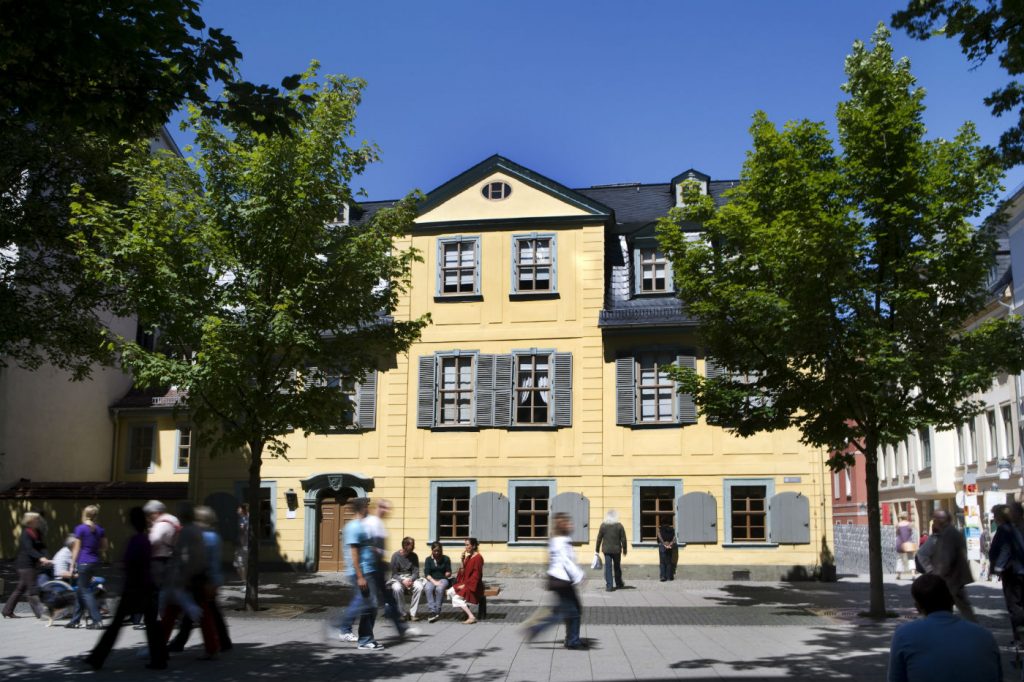
Works by both Schiller and Goethe are stored in the Duchess Anna Amalia Library, a Weimar must see. Some 50,000 books as well as the upper portion of the library were destroyed by fire in 2004. Miraculously the building has been restored, 62,000 damaged books salvaged, and 11,000 replacement volumes purchased at auctions. The Rococo Hall – all in white with gilded galleries, paintings, busts of poets and lined with shelves of books – is dazzling.
In front of the stately Neo-Classical National Theater, stands Weimar’s most famous monument: a statue of Goethe and Schiller. Goethe has his hands on his young friend’s shoulder. Both hold a laurel wreath to symbolize their shared fame. It’s a favorite place for a Weimar selfie.
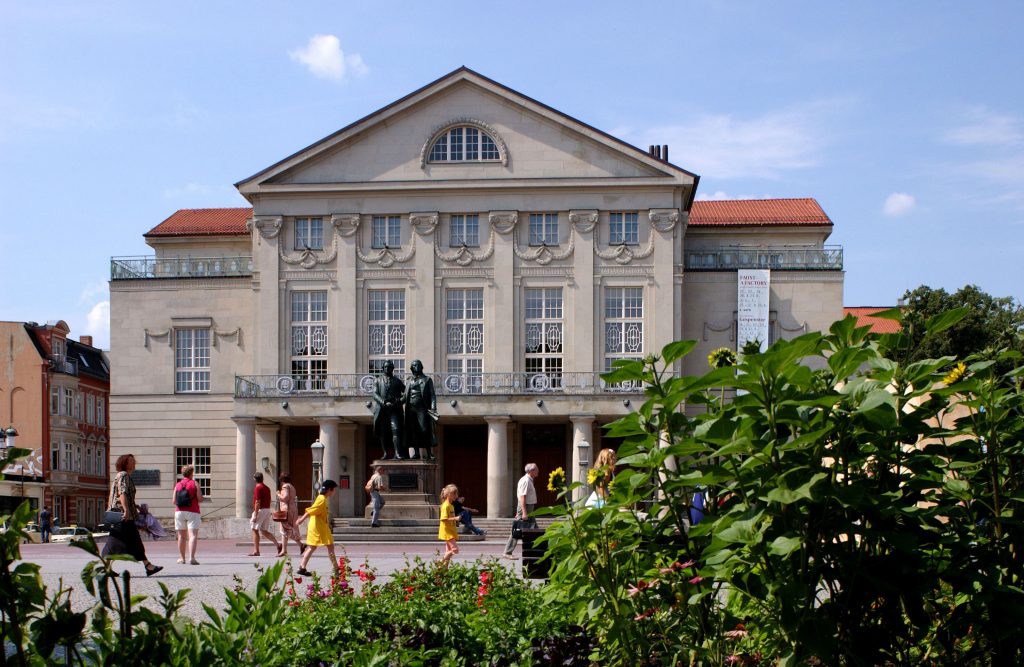
As Goethe once said of Weimar, “Where else can you find so many good things in one spot?” It is indeed wunderbar.
Where to Stay:
Hotel Elephant – Perfect location on the market square and near all the sights. Enjoy luxury and elegance at this hotel which has been a Weimar favorite for some 300 years. Markt 19, Weimar; + 49 364 380 20; www.hotelelephantweimar.com
Dorint Am Goethepark Weimar – Excellent location near the Goethe House, comfortable rooms, wellness amenities. Beethovenplatz 1-2, Weimar; + 49 364 387 20; www.hotel-weimar.dorint.com/de/
Hotel Anna Amalia – Family-run, centrally located hotel with a Mediterranean flair commemorating Goethe’s voyage to Italy. Geleitstrasse 8 – 12, Weimar; + 49 364 349 560; www.hotel-anna-amalia.de/en/
Where to Eat:
Residenz-Café – A Weimar favorite serving everything from copious breakfast specials to pastas and hearty German meals, including Thuringia bratwurst. 4 Grüner Markt, Weimar; + 49 364 359 408; www.residenz-cafe.de
joHanns Hof – Regional and seasonal specials. Features a large selection of wines from the Saale-Unstrut, Germany’s smallest vineyard known for dry, white wines. Scherfgasse 1, Weimar; + 49 364 349 3617; www.johannshof-weimar.de
Gasthaus zum Weissen Schwan – Goethe is said to have frequented this traditional guest house noted for up market regional favorites. Frauentorstrasse 23, Weimar; + 49 364 390 8751; www.weisserschwan.de/
What to Do:
Take a Bauhaus Walking Tour and visit historic Bauhaus sites with a student guide (all of whom are prospective architects, civil engineers, cultural scholars or artists). Geschwistre – Scholl – Straße 6a, Weimar; www.uni-weimar.de
Purchase a Weimar Card for admission to nearly all Weimar museums and free rides on the city’s public transport system. Card also includes an iGuide. Information on the card and much more on Weimar at www.weimar.de
Attend the 300-year-old Weimar Onion Market (Oct. 7 – 9, 2016) in honor of the prosaic vegetable. Goethe was an onion fan who even decorated his home and study with onions.

